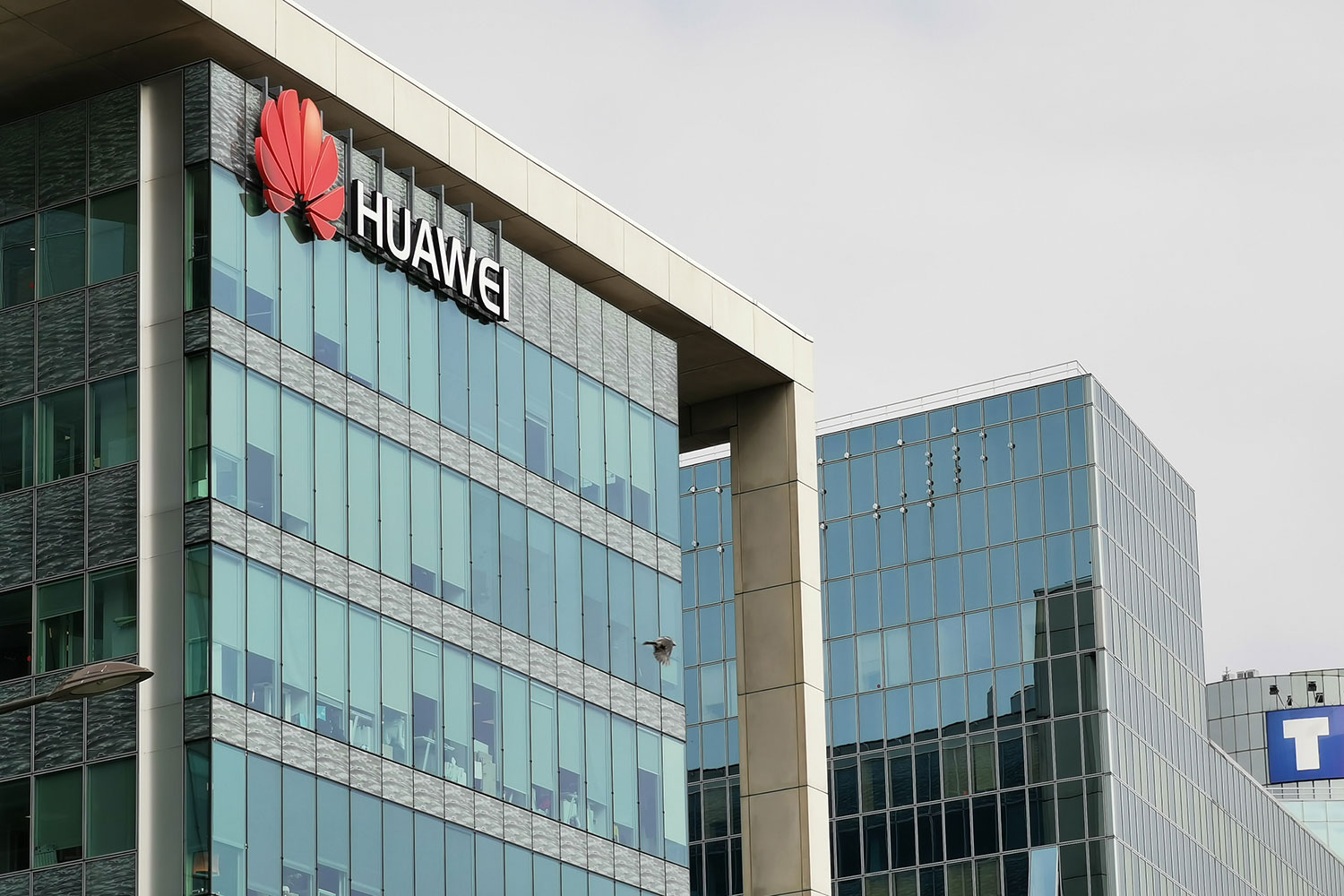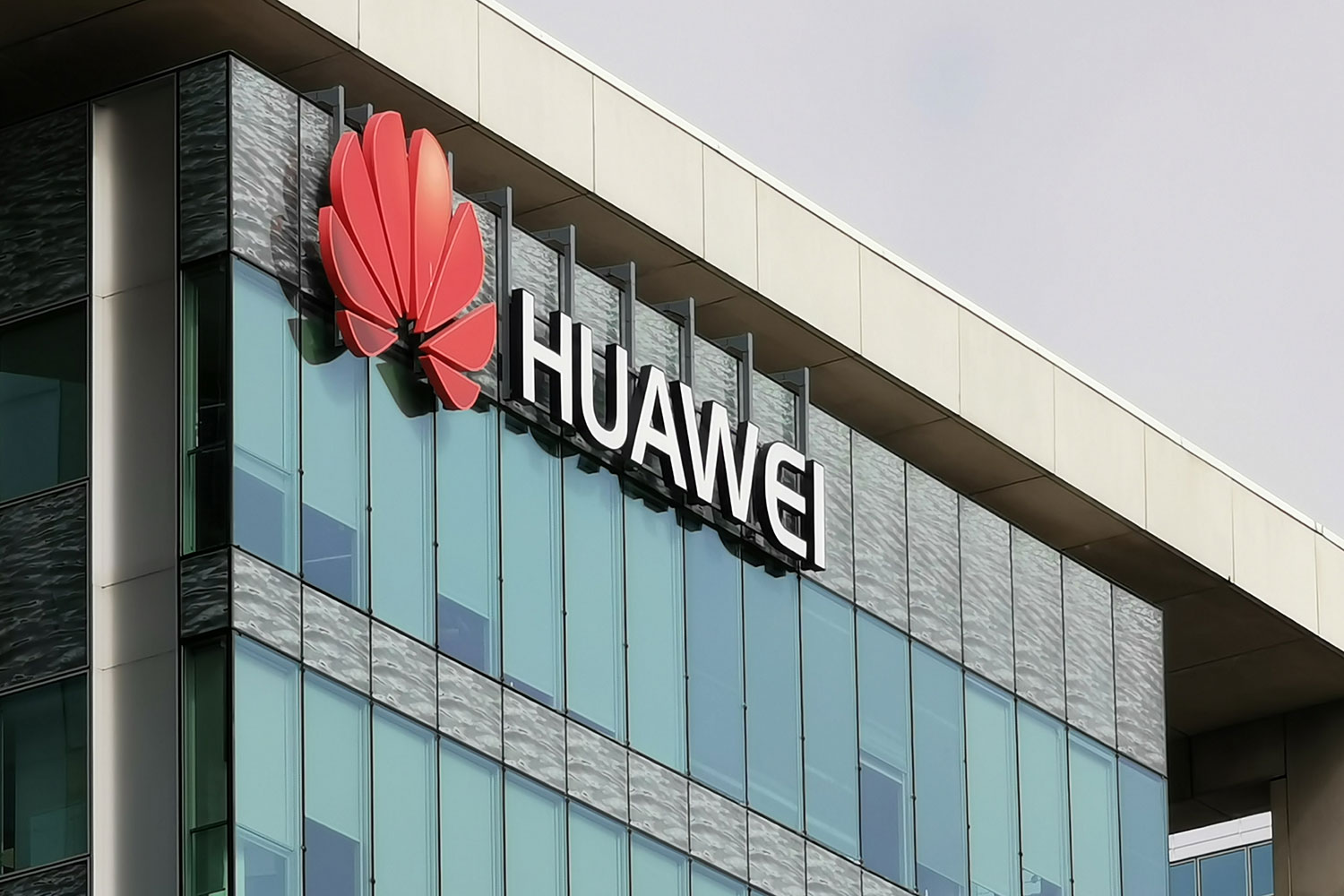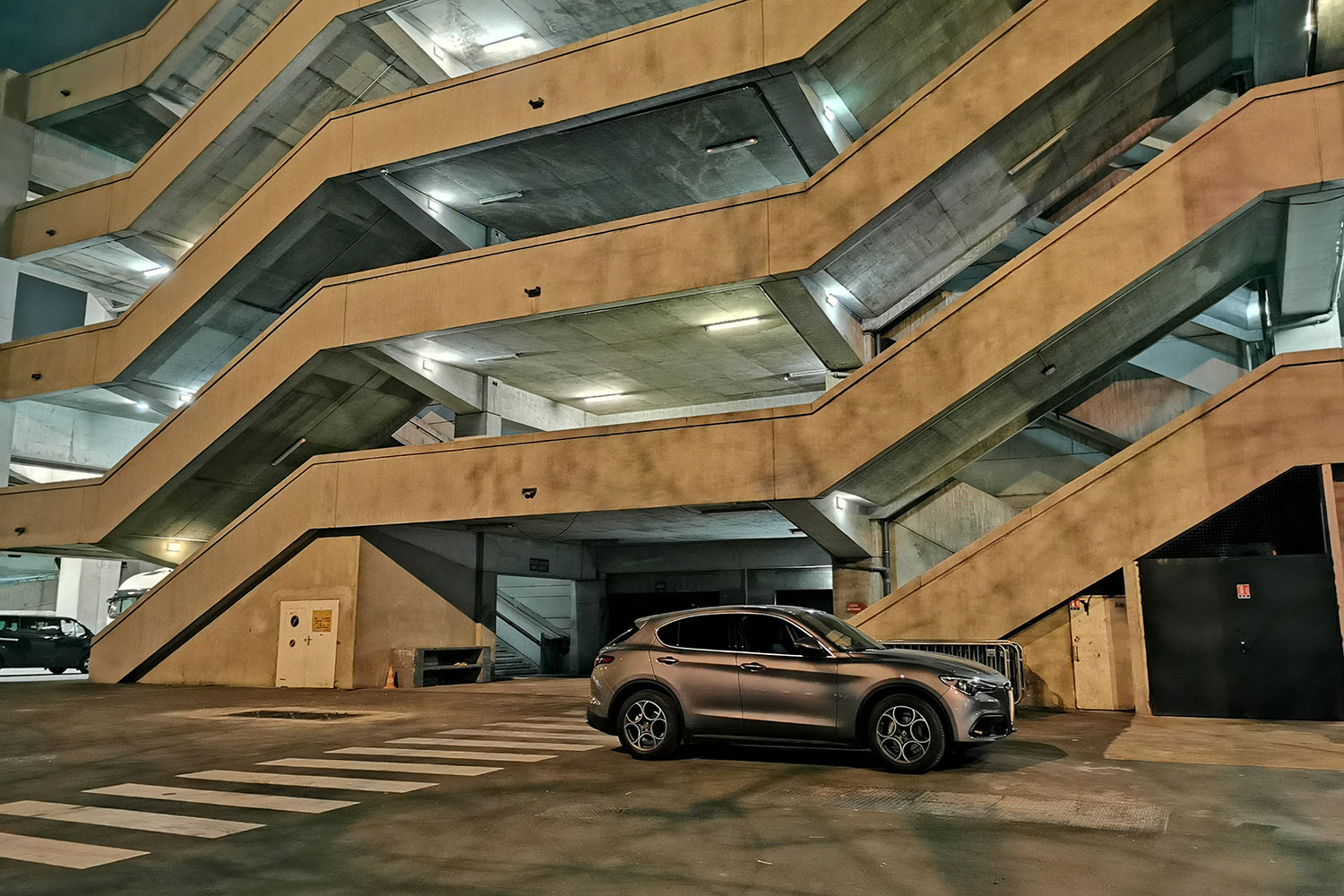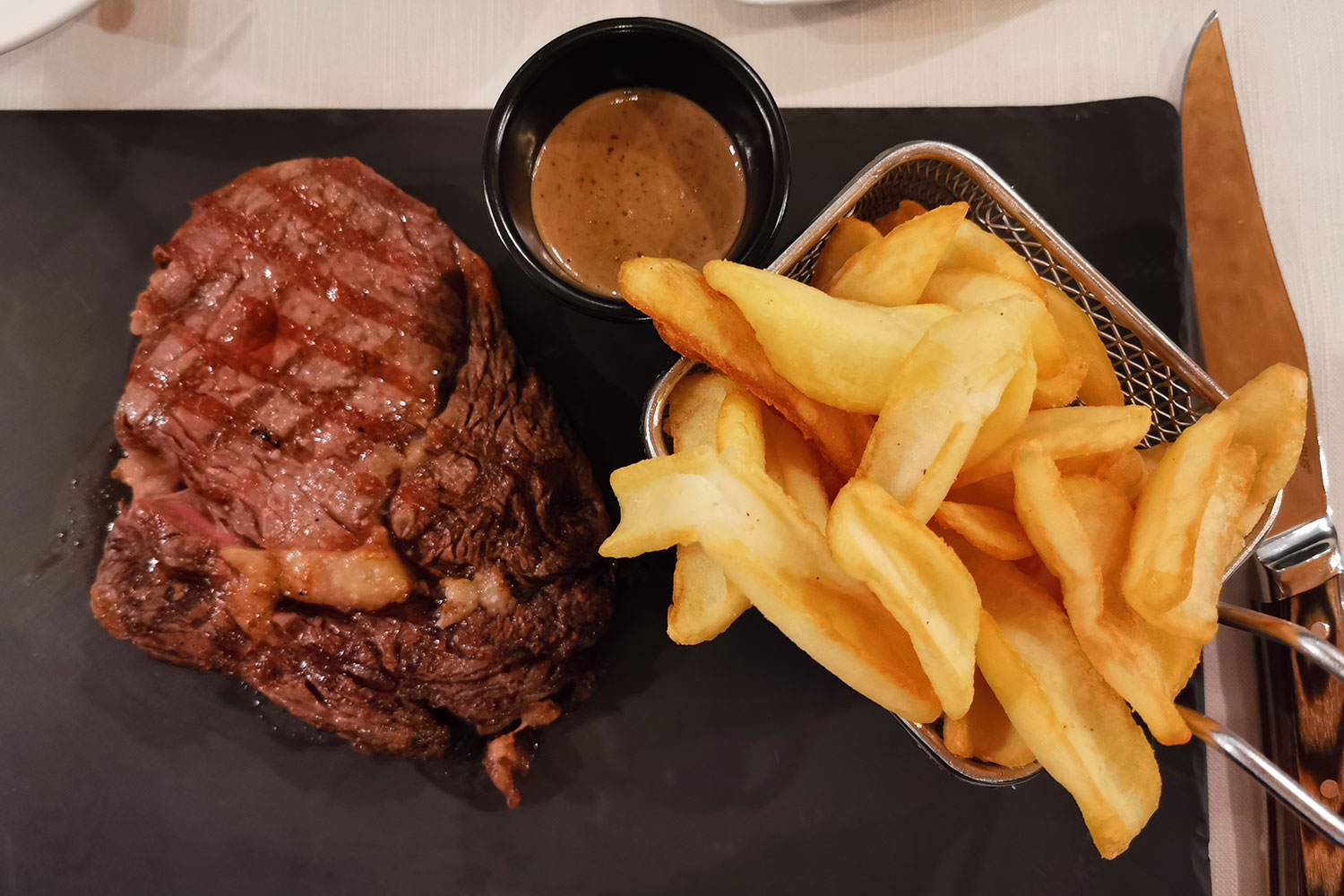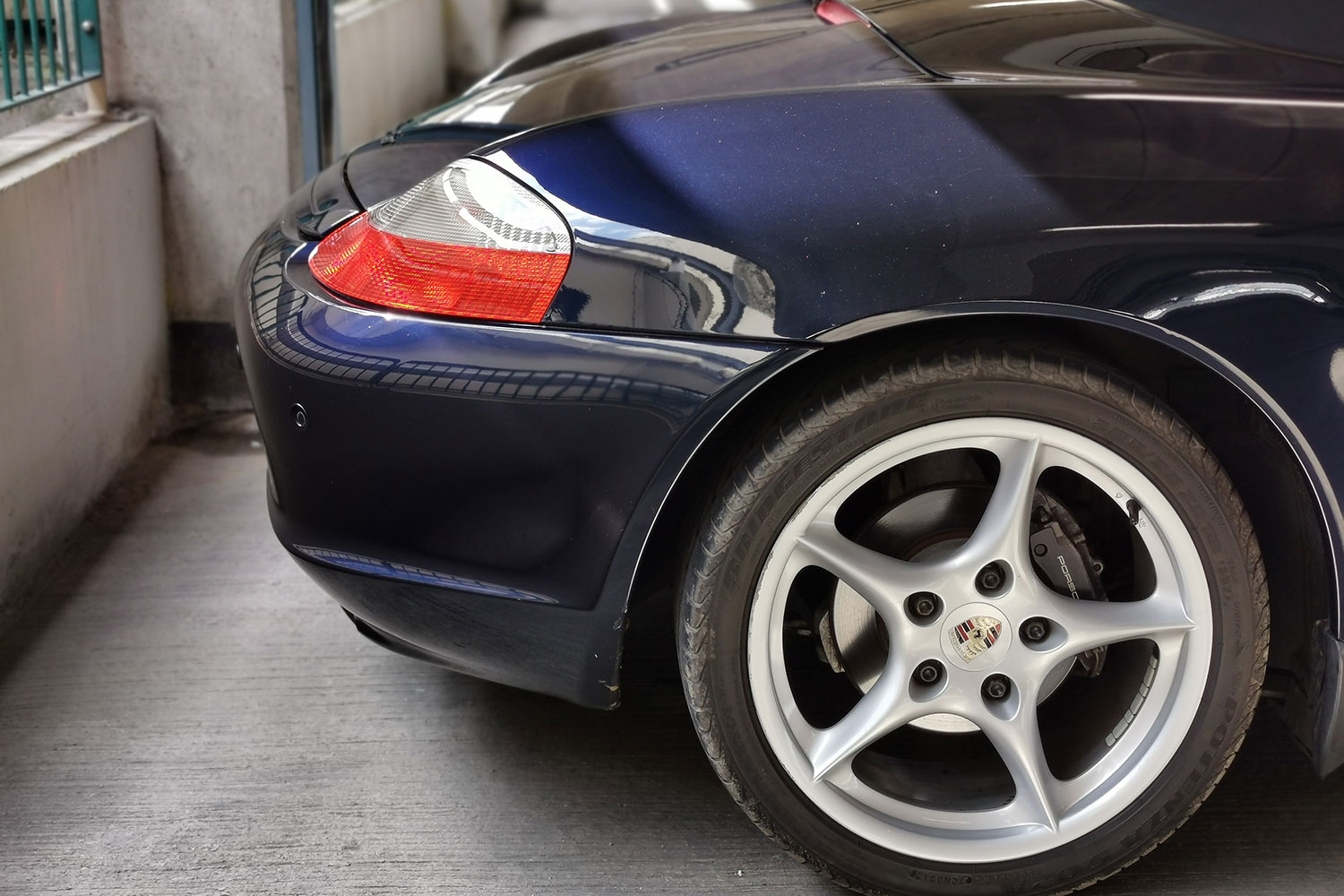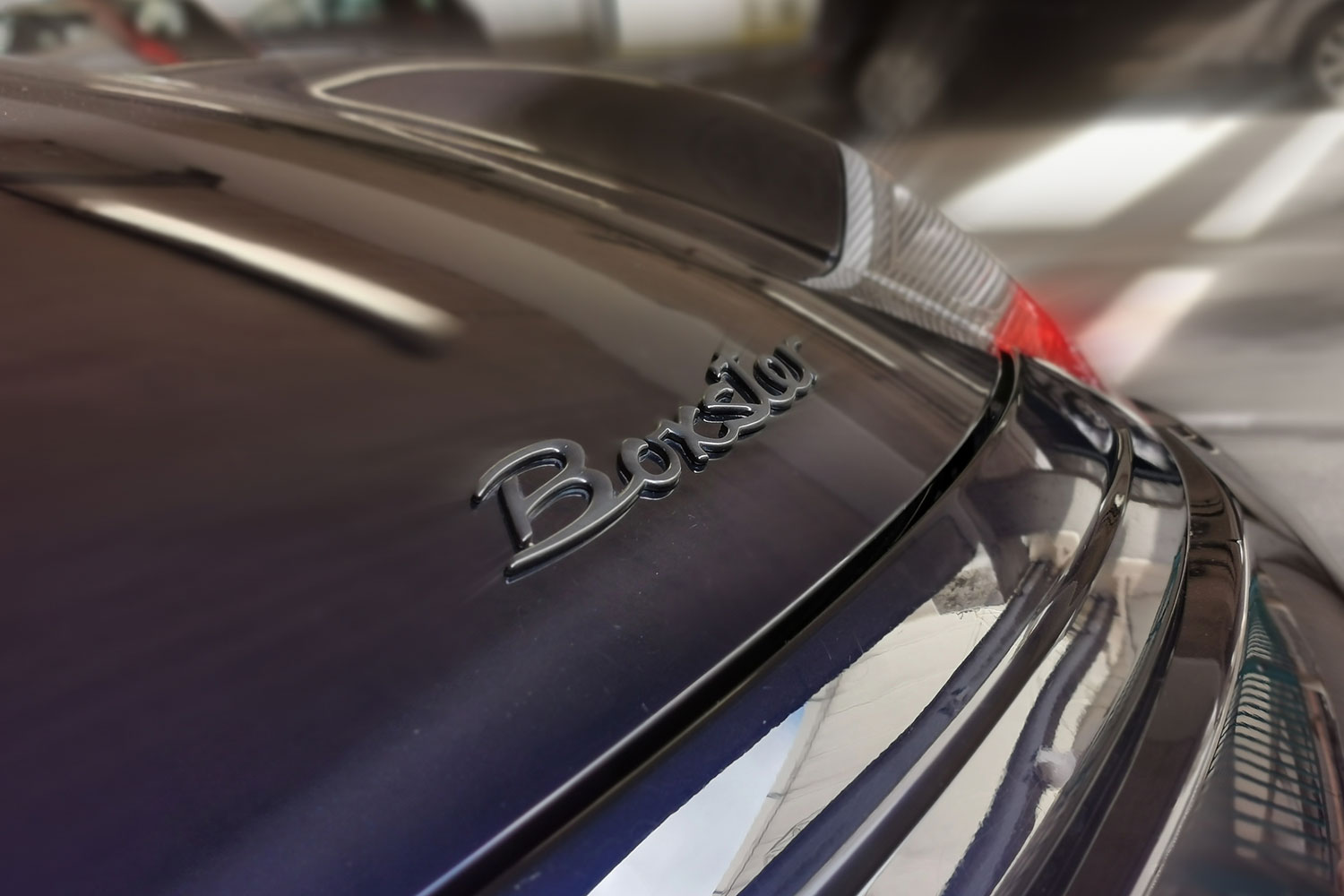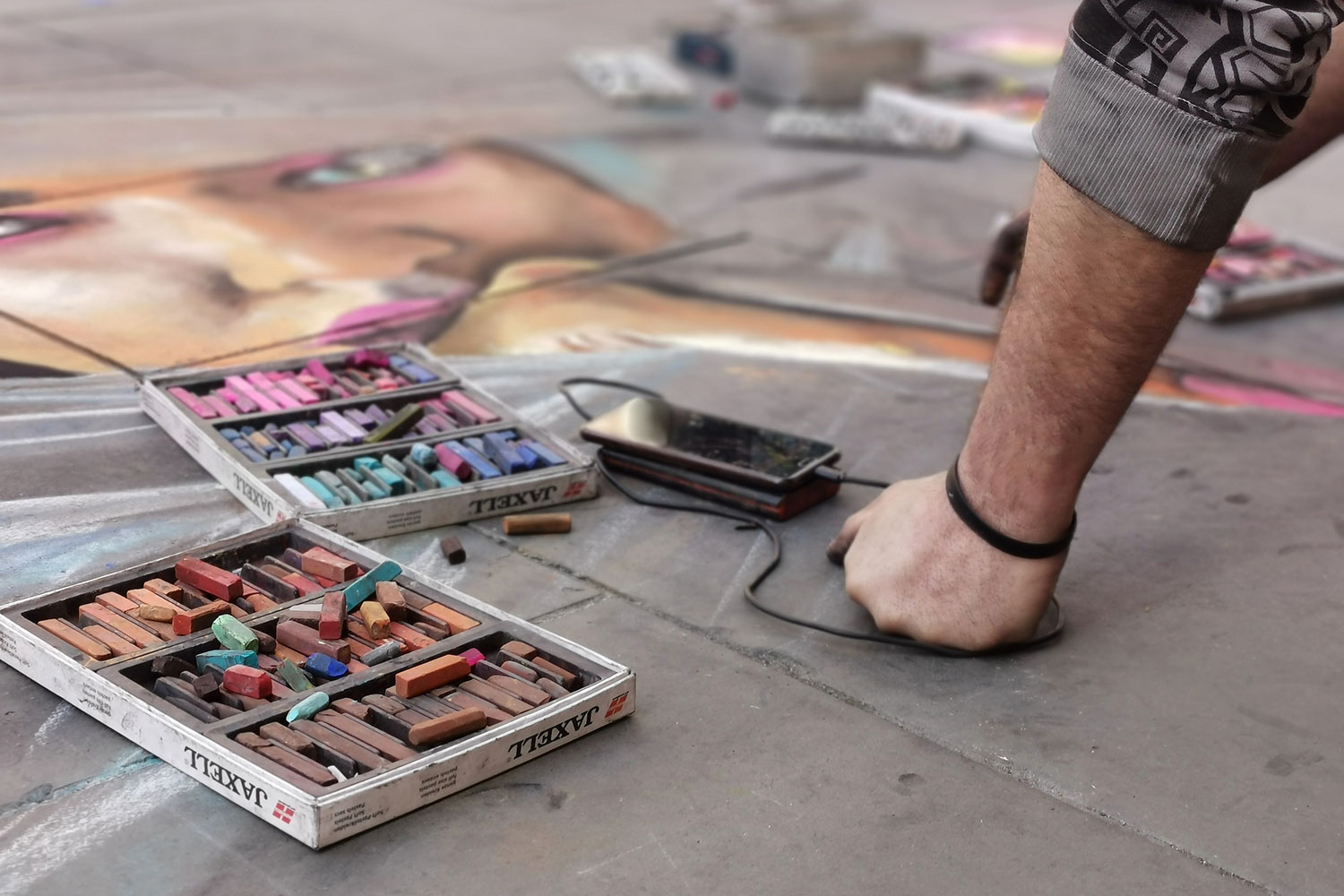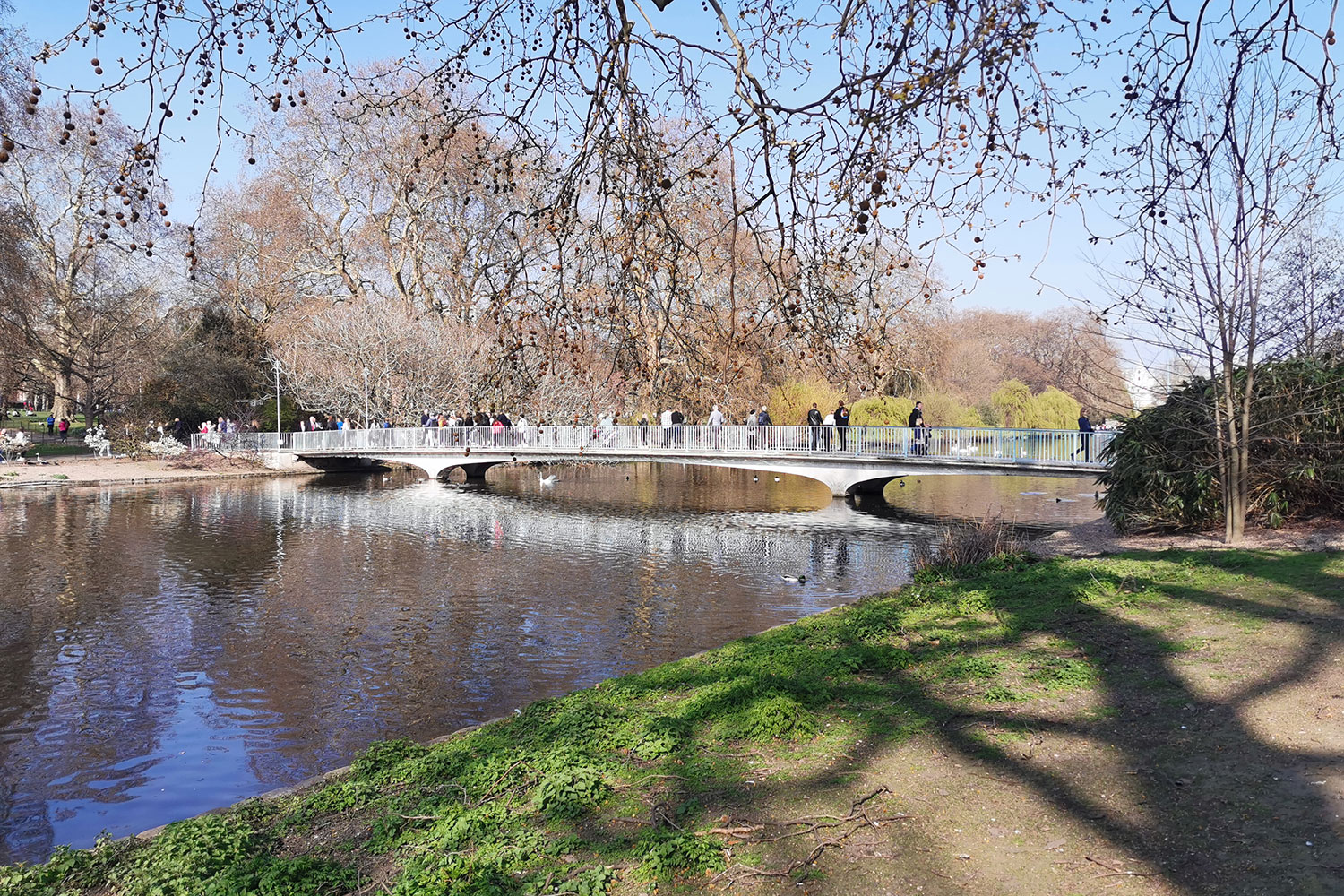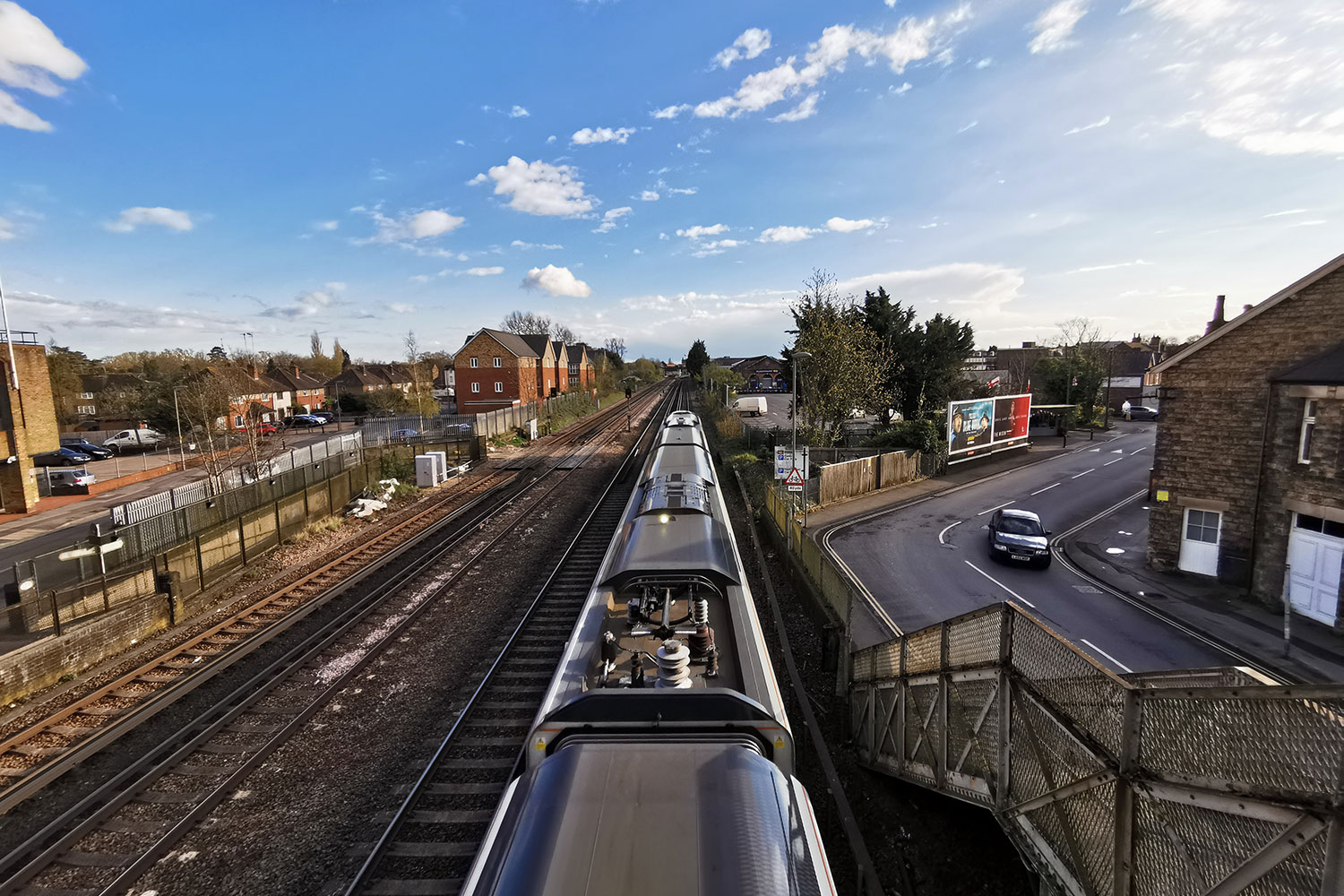
- Unique camera zoom
- Camera can see in the dark
- Long, all-day battery life
- Stunning color schemes
- Reliable security features
- Night mode doesn't always add atmosphere
- Not available in the U.S.
There are times when the Huawei P30 Pro’s camera is so staggeringly good, it defies belief. I’ve questioned whether I’m mistaken, and what I’m seeing is an error, or that my eyes are playing tricks. Whether it’s taking a seemingly impossible photo in the dark, or zooming right in on a subject far away, the P30 Pro’s camera is a bit like being Superman.
That’s before talking about the P30 Pro’s battery, build, and design, all of which are of a very high standard. Excelling in several areas doesn’t make the P30 Pro the perfect smartphone though, and the camera sometimes falls frustratingly short elsewhere — but mostly because we demand a lot from it — and some will dislike the software.
Additionally, and you may already know this, but the P30 Pro is a phone you won’t be able to buy at a store if you live in the U.S., and more than ever before, you’re missing out on something very, very special indeed. How good is it? It deserves to be the benchmark against which all other cameras taking specialized photos should be judged.
Stunning colors
The Huawei P30 Pro’s design is a blend of the P20 Pro and the Mate 20 Pro that came before it, and it benefits greatly from being kept in a case. The sides are less sharp than the Mate 20 Pro, but are still tapered enough that it’s noticeable in the palm. A transparent silicone case is included in the box, and we’ve kept it inside after a day or so, as it makes the phone more comfortable and less slippery to hold. Transparency is important, as Huawei has spent considerable time making two of its most stunning colors on a phone, yet.
At first, the glowing orange/red version — called “amber sunrise” — will be the one you want; but don’t dismiss the stupidly named “breathing crystal,” a stunning blue-to-silver, with shades of pink and green (an oyster shell-style gradient), which will become the connoisseurs choice. A black and an “aurora” (Huawei’s trademark blue hue) model are also available. All finishes are smooth, lustrous, and beautifully reflective. The amber sunrise model seems to attract fewer fingerprints than the more glossy breathing crystal version.
The P30 Pro weighs 192 grams, with a slight top-heavy bias, which is almost certainly caused by the additional camera technology. This leads us to one of the P30 Pro’s design flourishes — The ends of the phone are flat, and yes with careful balancing, you can stand it up. It’s a little heavier than the Samsung Galaxy S10 Plus, but lighter than the OnePlus 7 Pro, the Oppo Reno 10x Zoom, and the iPhone XS Max. It’s slim too, and is very easy and comfortable to carry around in your pocket.
The colors really give the P30 Pro its character. Choose the black version at your peril.
The notch in the screen is tiny and contains only the selfie camera. This is a major benefit over the Mate 20 Pro’s all-dominating notch, as you get more notification space along the top of the screen, at the expense of secure face unlocking hardware. The bezels are also tiny, and there’s no fingerprint sensor under the screen like the P20 Pro. It’s more modern-looking than its predecessor, and larger and heavier than the Mate 20 Pro. The camera bump on the back contains all three lenses, consolidating them into one rather than the messier array on the P20 Pro.
Examining the P30 Pro closely for the first time, it came across as a little faceless compared to the highly recognizable P20 Pro and Mate 20 Pro, both of which have individual styles. The design has grown on me since then, its simplicity coming as a shock after the challenging visual elements of its sibling phones, but it’s the colors that really give the P30 Pro its character. Choose the black version at your peril.
A new camera standard
Created with Leica, the P30 Pro’s camera has three lenses: A 40-megapixel f/1.6 aperture lens, a 20-megapixel f/2.2 aperture lens, and an 8-megapixel f/3.4 aperture lens. These are paired with a time-of-flight sensor for depth sensing. The main and telephoto camera lenses have optical image stabilization (OIS), and Huawei’s own artificial intelligence stabilization system called AIS. The camera has two main, special features — a periscope zoom feature, and an ability to take bright low-light images.
- 1. 10X Zoom Portrait
- 2. 5X Zoom Portrait
- 3. Wide Angle Portrait
- 4. Standard Portrait
There are creative opportunities galore here. There are so many modes and different things to try — you won’t get bored with using the P30 Pro’s camera. From monochrome mode and an A.I.-assisted background blur in videos, to the color splash filter (where one color is isolated against a black and white image) and the highly effective Aperture bokeh mode, it’s a smorgasbord of camera fun.
Let’s talk about the zoom first. Remember being impressed by what a 2x zoom on a phone could do? The P30 Pro is even more transformative, because 5x zoom gets you much closer than you expect to a subject. The amazing thing is, there’s no obvious loss of quality. It proves you really can take stunning, sharp, handheld, zoomed-in photos using a phone. The 5x zoom is, by far, the most unique and creatively exciting camera feature on any current smartphone.
There are so many modes, so many different things to try, you won’t get bored with using the P30 pro’s camera.
Go up to 10x (a combination of optical and digital zoom) and the sharpness and detail drops, but nowhere near as much as you may expect. It does depend a little on the environment, as the results vary indoors and outdoors. However, it’s still remarkable that a phone can do this, and even more so when you zoom in by 50x. Yes, 50x digital zoom. Prepare for whatever subject to wobble about like a maniac on the phone’s screen, but steady yourself, and the results — whilst not exactly detail-filled — are surprisingly kind-of useable, and not the mess they really should be at this zoom level on a phone.
It’s when you combine the zoom capability with the wide-angle lens that the P30 Pro’s flexibility becomes clear. The 0.6x wide shot can be zoomed right in to 50x, meaning the P30 Pro takes care of almost every shot you’d ever want to take with a smartphone, even before you add Night mode, Super Macro, or monochrome modes.
You may be surprised to learn Night mode has become almost superfluous, after being such a revelation on the P20 Pro. The P30 Pro’s low-light ability is so immense, it doesn’t need it. In the images above, only the boat on the water in Taipei was taken with Night mode, as there are times the photos taken with Night mode are less accurate than those taken without it. It’s so capable, that atmosphere can get lost, and skies can get too grey. Take low-light shots without it, and some of the atmosphere is retained.
There is almost no low-light scenario where the P30 Pro doesn’t “see” more than any other smartphone camera out there, and that includes the Google Pixel 3’s Night Sight. The low-light images have detail, color accuracy, depth, and realism. It’s not just getting by in low light, it’s dominating the environment.
Super Macro mode is an A.I.-enhanced feature. It activates when it thinks you want to take a close-up shot, or it can be selected from the More menu. It can struggle to focus correctly, and it will sometimes activate when you don’t want it to, but equally, it can take some excellent close-up shots. Monochrome mode on the P30 Pro is a Leica-tuned filter, and not true black and white like on the P20 Pro.
The camera app switches quickly between lenses and zoom stages too, with only a slight pause for refocusing. However, go beyond 10x by accident, and it’s a pain to quickly return to normal zoom, with the risk of missing your shot. It’s not really a one-hand operation either. As the features on Huawei’s camera increased, so did the complexity of the app. It’s logical enough, but you have to hold the phone like a camera — with two hands — to use it effectively. The P30 Pro is definitely a phone that thinks it’s a camera.
Software updates since the P30 Pro’s release have improved early problems with exposure levels, sharpness, and color accuracy, but they do still occur, especially when using the zoom or wide-angle mode. We recently compared the P30 Pro to the Oppo Reno 10x Zoom’s similar camera, which emphasized the Huawei phone’s superior ability. Updates have also added a new Dual View camera mode, where one side of the screen shows a wide-angle view, and the other shows a zoom mode. It works well, but we’re not sure how often it’ll be used, and it does come across like a gimmick, much like Nokia’s Bothie mode.
Months after the P30 Pro’s release, it’s the almost-perfect, all-round smartphone camera winner, perhaps only matched by the Google Pixel 3 XL, which it beats when it comes to features. When the P30 Pro gets it right, it does so in a way that’s impossible on another phone and ends up being so superb you forgive its slight shortcomings.
Good screen and audio
The P30 Pro’s OLED, 2,340 x 1,080 pixel resolution screen is great. It shows a world where colors are striking, shadows are deep, and whites crisper than newly-laundered bedsheets. It’s so bright I rarely wanted to keep it at maximum brightness, as it’s so searing you’ll need sunglasses.
The stunning technicolor glory — best visualized when playing hyper-real music videos like Apink’s Eung Eung, and Izone’s Violetta, and Star Trek Discovery on Netflix — comes at the expense of realism. It can wash out easily, and skin tones aren’t as good as other OLEDs, including the iPhone XS Max. However, if you don’t mind experimenting, Huawei gives you control over the screen’s look. Dig into the menu and you can alter the color mode, temperature, and enable a reading mode too.
The camera’s supreme flexibility is matched by long battery life.
Screen performance is only one side of the experience, and happily the audio side doesn’t disappoint either. There’s no headphone jack on the P30 Pro, so you have to use Bluetooth or USB Type-C headphones. During our review, we’ve used both Samsung’s Galaxy Buds and Razer’s Hammerhead USB Type-C headphones — stereo separation is excellent, there’s a strong bass response, and the Dolby Atmos tweaks make a difference when using wired headsets.

The internal speaker exits through a grill on the bottom of the phone, and through the USB Type-C charging port. It’s louder and clearer than the one fitted to the Mate 20 Pro, but not as high quality as phones such as the iPhone XS Max and the LG G7. It’s fine for spoken word though.
Huawei has replaced the standard voice call speaker with an in-display version. It goes on about something called, “electromagnetic levitation,” which is meaningless waffle. It should just say an in-screen speaker that works just as well as a normal speaker, because it’s great. When you make a call you don’t have to be very precise with ear placement, and moving the phone around normally didn’t stop us hearing the caller. Volume drops happened if you moved your ear far down the screen, but this wouldn’t happen naturally. It’s solid new technology that works well.
Performance and software
Huawei hasn’t changed the formula over the Mate 20 Pro much for the P30 Pro. It has the same Kirin 980 processor and a choice of 6GB or 8GB of RAM. Our review amber sunrise model has 8GB of RAM. At no time has it struggled or slowed down. It’s a powerhouse: Smooth, fast, and polished.
There are some naysayers regarding Huawei’s EMUI interface — it’s version 9.1 here, over Android 9 Pie with the March 2019 security patch — but for the most part, these people are mistaken.
It’s not perfect, but then neither is Android in general. Want software that has an all-over consistent and linear design? Buy an iPhone, and don’t complain about its lack of customization potential ever again. If there is a problem with EMUI, it’s the look compared to Android on the Pixel, and some may not like the overly stylized icon design.

EMUI needs some tweaking, but it’s just as manageable on a daily basis as any other third-party Android user interface. Version 9.1 seems to be more stable than 9.0 on the Mate 20 Pro, plus the notifications have improved too. They now reliably show on the lock screen when you switch the option on, for example.
Here are the benchmark test results:
- AnTuTu 3DBench: 289,591
- Geekbench 4 CPU: 3,245 single-core; 9,540 multi-core
- 3DMark Sling Shot Extreme: 4,166 (Vulkan)
These scores put it above the Mate 20 Pro — which has the same Kirin 980 chip — but behind Snapdragon 855-powered devices including the Galaxy S10 Plus and the Xiaomi Mi 9. Benchmarks aren’t everything, but it’s interesting to see how it compares to the competition here.
There are still too many apps installed we never use, from Huawei’s own browser and the hateful SwiftKey keyboard, to a mirror app, a calendar, and more. Some are good, such as Huawei’s music player and the voice recorder app, which is considerably better than the iPhone’s for example, with fast scrubbing to listen and re-listen to sections of voice recordings. The music player’s great too, with a handy timer to shut the player off after a set time. While there is a system cleaner app, it’s no longer intrusive and doesn’t deliver annoying notifications; Huawei’s own digital wellbeing app is also helpful and customizable, and it tracks your steps automatically using the phone’s accelerometer.
Huawei said the P30 Pro will receive an update to Android Q in the future, despite the issues surrounding the company’s presence on the U.S.’s Entity list. At the time of writing (July 2019) my review P30 Pro has Android version 9.1 with the June 5 Android security update installed, and EMUI 9.1.
Security and battery
Uh oh, the P30 Pro has an in-display fingerprint sensor. I turned the one on the Mate 20 Pro off because it was so frustratingly unreliable, and lived with the face unlock. It’s with great pleasure I can say the updated sensor and software on the P30 Pro is a vast improvement.
It’s lower down on the screen, which does make it easier to locate, and is consistently reliable. When it does fail to read my print, it’s because I wasn’t pressing in the right place, rather than it being rubbish. There is face unlock, but it’s not secure. It is, however, faster and more reliable than the Mate 20 Pro’s face unlock.
The battery delivered 24 hours of solid, heavy use.
The battery has a capacity of 4,200mAh, the same as the Mate 20 Pro, with the same 40W wired fast-charging system, and 15W wireless charging too. Battery life is truly excellent, easily beating out the competition, and removing all battery anxiety from your life. Nearly five months in, 24 hours of solid, heavy use is easily achievable while using airplane mode overnight will see it last two days in my experience, as will moderate use.
EMUI has some battery saving measures to stretch any remaining amount out if you really need it, but I’ve simply never had the need to activate them. In our YouTube video benchmark test, I played a 1080p video on the P30 Pro with brightness at the max, and it managed to last a whopping 16 hours and 4 minutes. That puts every other phone to shame and is a massive selling point for the P30 Pro.
Price, warranty, and availability
The Huawei P30 Pro is not officially available in North America. It’s available in the U.K. through Huawei, online retailers, and most major networks, and throughout the rest of the world including Canada too. There are three versions: A 1,000 euro ($1,125) 8GB/128GB version, a 1,100 euro ($1,235) 8GB/256GB version, and a 1,250 euro ($1,405) 8GB/256GB version.
Huawei provides a two-year warranty on the phone in the U.K. covering defects, but not wear and tear or mistreatment.
Heightened media attention regarding Huawei and its presence on the U.S. Entity List may have caused some to question if buying a Huawei phone is a good idea. Huawei insists it’s business as usual at the company, and has announced several times that all warranties are operational, and software security updates will arrive too. The P30 Pro is also on Huawei’s list to receive the Android Q update.
Our Take
There is almost no photo you’ll want to take with a smartphone that the fabulous P30 Pro won’t be able to shoot, and when it does, it’ll likely deliver astonishing results. The camera’s supreme flexibility is matched by long battery life, strong performance, and the choice of some gorgeous colors schemes.
Is there a better alternative?
Yes. The P30 Pro stands alone when it comes to the periscope zoom; but great camera phones are not a rarity these days. The $1,000 Samsung Galaxy S10 Plus, the $800 Pixel 3, and the $1,100 iPhone XS Max are all worthy of attention, and have very capable cameras. The $750 OnePlus 7 Pro is a great alternative, with the best camera OnePlus has put on a phone, plus a really beautiful screen.
The second half of 2019 will bring an exciting selection of phones to take on the P30 Pro. In the near future look out for the Samsung Galaxy Note 10, the next iPhone, and the Pixel 4, plus Huawei’s own Mate 30 Pro.
How long will it last?
The Huawei P30 Pro has an IP68 water resistance rating, so is reasonably resilient to the wet stuff, but the glass body is definitely a smash risk, so a case is advisable. The camera is cutting-edge, the processor is the latest from Huawei, and there is plenty of internal storage space. The hybrid SIM tray takes two SIMs, or a single SIM and one of Huawei’s own proprietary storage cards. There is no reason the phone will not remain capable and high performing for three to four years at least.
Should you buy one?
Yes. The periscope zoom and incredible low-light performance makes it almost unique among top camera smartphones today, and are serious, genuine reasons to buy the P30 Pro. The battery life is also superb, and the additional list of features — from the capable in-display fingerprint sensor to the sleek design — cement the P30 Pro’s place as one of the most desirable smartphones released in 2019 so far.
The slight caveat to the glowing recommendation is that the future of Huawei and Google’s partnership is still not clear. Huawei assures us the situation is under control, and that updates and services will continue; but a resolution has not been reached with the U.S. government at the time of writing. The temporary reprieve will end on August 19, and more will be known at that time. Even if this date passes with no solution in place, the P30 Pro will continue working, along with Google Play and all your apps, regardless.
Updated on July 29, 2019: Added in further comments on the camera and its new modes, further battery details, and information on the ongoing Huawei situation. Several new night and lowlight images added.














